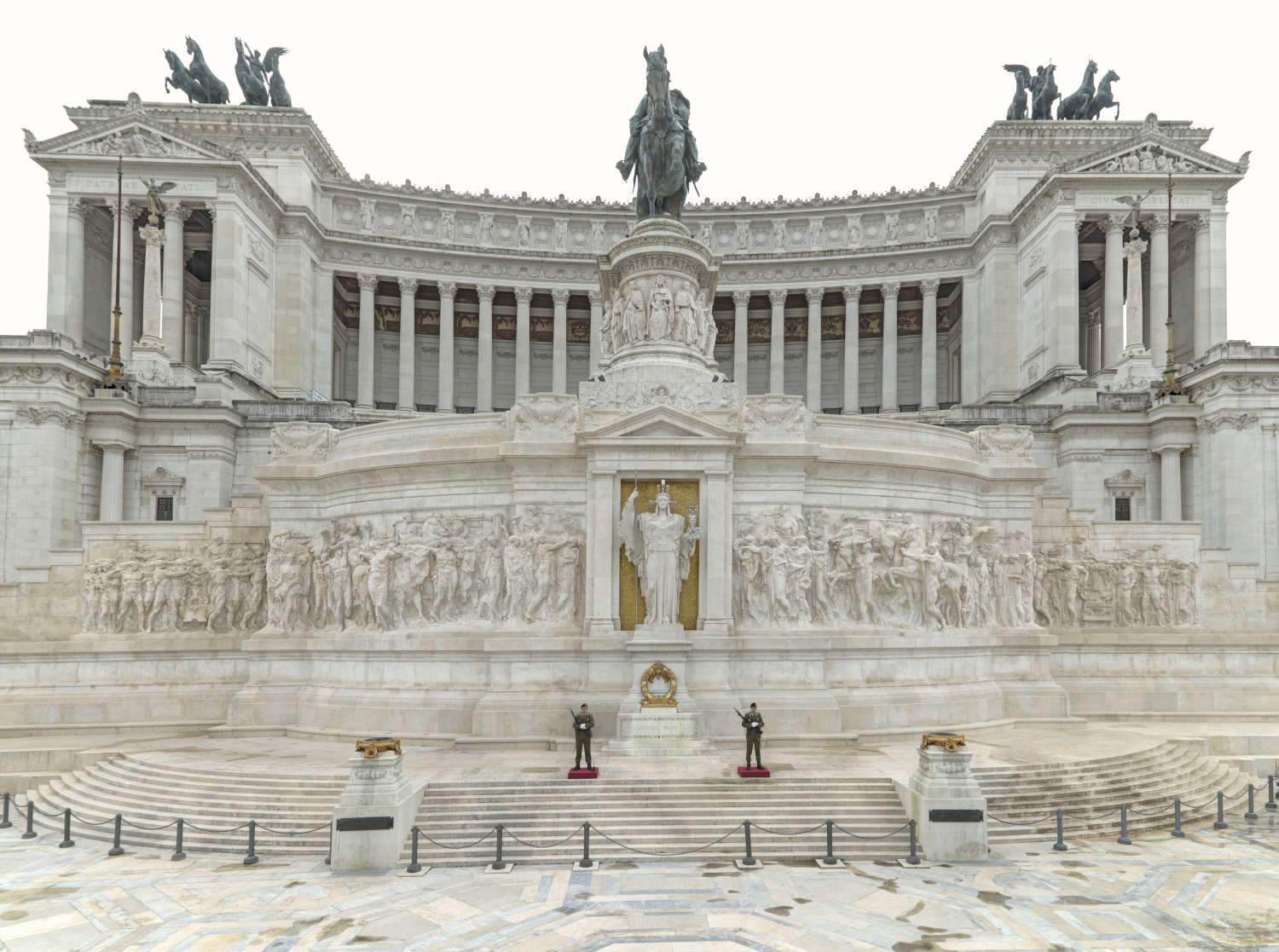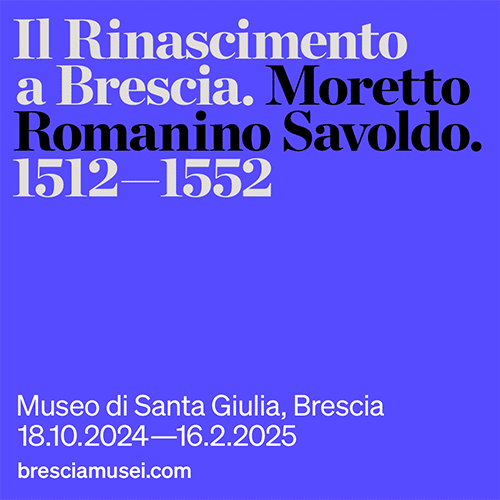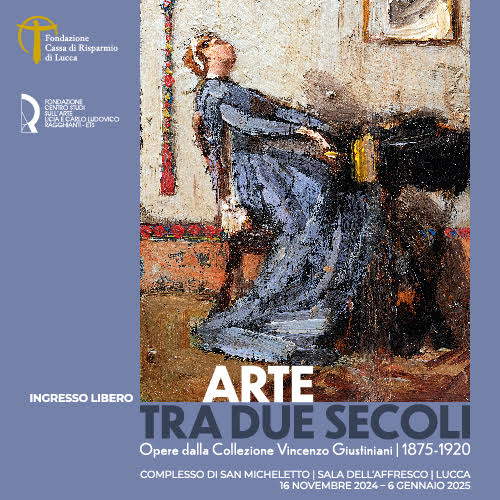Rome, finishes the restoration of the Altar of the Fatherland
In Rome, with the completion of the work on Angelo Zanelli’s frieze , the restoration of theAltar of the Fatherland, which began last March, comes to an end. This is the central area of the Vittoriano, a large secular altar designed by architect Giuseppe Sacconi after the unfinished monument was inaugurated in 1911. The altar, dedicated to the Nation and its values, was decorated with a frieze by Lombard Zanelli, who won the competition announced in 1908 and finished his work in 1925. Thus, the monument is once again visible to the eyes of the thousands of people who visit the monument to Victor Emmanuel II every day and cross the central Piazza Venezia.
The long restoration campaign pursued three fundamental objectives: the material preservation of the work, which twenty-three years after the last restoration was in a critical condition due to exposure to weathering and pollution; the restoration of legibility to Zanelli’s frieze; and theacquisition of knowledge about how the work was executed.
To celebrate the completion of the work, the exhibition The Goddess Rome and the Altar of the Fatherland will be opened to the public on Oct. 26. Angelo Zanelli and the Invention of the Symbols of United Italy, in the Zanardelli Hall of the Vittoriano. The tour will display to the public for the first time a selection of plaster casts from the Gipsoteca del Vittoriano and works that have arrived on loan from private collectors and other museum institutions, such as the Brescia Musei Foundation. The exhibition, curated by Professor Valerio Terraroli, and open until Feb. 25 with free admission, allows visitors to retrace the entire story of the famous monument, cross-referencing the results of documentary research with new findings from the restoration. The itinerary includes an immersive room that allows visitors to live an immersive experience by entering both the inauguration ceremony of the Vittoriano in 1911 and Zanelli’s frieze itself.
The exhibition and restoration are part of a project to protect and enhance the Altar of the Fatherland, conceived and implemented by Edith Gabrielli, director of VIVE - Vittoriano and Palazzo Venezia, with theobjective both to rediscover the figure and works of Angelo Zanelli and to share with the public, researchers, citizens and tourists, such a symbolic place of Italy as the Altar of the Fatherland, where, perhaps more clearly than elsewhere, the pulse of the Nation can be heard.
Without erasing the signs of the passage of time, the restoration work has consolidated the material and restored the correct visual balance to the whole. Today, the quality of the work can be appreciated down to the smallest detail, including the polymateric choice for the Goddess Rome: in fact, both the gold of the background mosaic of the niche and the silver of the winged Victory statuette and spear are clearly visible. The intervention also involved the Tomb of the Unknown Soldier: the cleaning of the marble and the treatment of the bronze crown and braziers with the eternal flame gave it full dignity again.
The exhibition was previewed today by Defense Minister Guido Crosetto and Culture Minister Gennaro Sangiuliano. “The Altar of the Fatherland,” said Minister Sangiuliano, “is a place that more than others represents the national identity and the common feeling of Italians. My goal is to bring many young people here so that this becomes a place that belongs to everyone, that Italians consider as their ’home,’ especially the younger generations.”
“The Frieze of the Altar of the Fatherland,” Minister Crosetto stressed, “constitutes a piece of our history: it should be studied and known by young people because this part of the monument was made by a boy, by a young man. It is important to make it known because it represents the strength of a young man and how much this strength has engraved in one of the most important monuments for our country.”
"After Bronze and Gold, this on Zanelli is the second focus exhibition promoted by VIVE,“ said Edith Gabrielli. ”For a long time not only Zanelli, but all sculptors active in the Vittoriano have been victims of a lack of critical understanding. The exhibition helps to change the sense of things: it helps visitors and, why not, scholars as well, to get to know them better. A different and certainly positive picture emerges: we can thus say that the great frieze of the Altar of the Fatherland is definitively returned to the public and critics." The first objective of the exhibition, is in fact, to re-evaluate the figure of Angelo Zanelli (San Felice del Benaco, 1879 - Rome, 1942). The artist won national and even international fame thanks to the frieze for the Altar of the Fatherland, as attested by the numerous commissions for Latin America: after his death, however, his figure fell into oblivion. The exhibition recounts the entire career of the Brescian artist, from his beginnings upon entering the National Artistic Board of the Academy of St. Luke in 1903 to the prestigious commissions of the 1920s and 1930s, highlighting his stylistic mutations, from verism to the Symbolist choice inspired by Viennese Secessionist models, to the neo-Michelangelism of the early 1920s and the Novecentism of the mid-1930s.
Within this dimension lies the specific lunge on the Altar of the Fatherland: the exhibition allows us to retrace its history in its entirety, cross-referencing the results of documentary research with the novelties that have emerged from restoration. The narrative includes the 1908 competition, the popular referendum at the inauguration of the Vittoriano in 1911 that led to Zanelli’s final victory, the various stages of the execution of the frieze, the inclusion of the Tomb of the Unknown Soldier in 1921 and the placement of the statue of the Goddess Rome in 1925.
On display are 57 pieces, including 44 cataloged plaster elements from the Vittoriano’s Gipsoteca that boast a connection with the Altar of the Fatherland and its author, also restored for the occasion-a heritage that until a few months ago was almost unknown. Important materials then arrive on loan from Italian museum institutions and collectors. With a view to enhancing the figure of Zanelli and telling the story of the Altar of the Fatherland, the itinerary also offers an immersive reality room: thanks to the power of digital technology, visitors will be able to live an immersive experience by entering both the inauguration ceremony of the Vittoriano in 1911 and Zanelli’s restored frieze itself, thanks to images from Mauro Magliani’s photographic campaign.
 |
| Rome, finishes the restoration of the Altar of the Fatherland |
Warning: the translation into English of the original Italian article was created using automatic tools. We undertake to review all articles, but we do not guarantee the total absence of inaccuracies in the translation due to the program. You can find the original by clicking on the ITA button. If you find any mistake,please contact us.






























